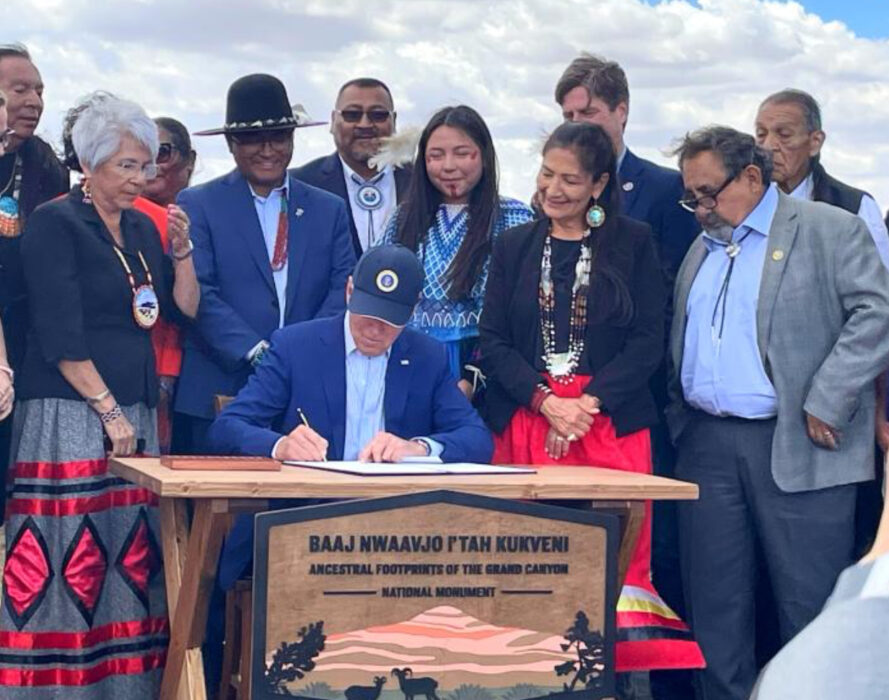The nation’s newest national monument has a long history of fighting off fire. Its future may mean defending its artifacts against firefighters.
The Baaj Nwaavjo I’tah Kukveni — the Ancestral Footprints of the Grand Canyon National Monument in northern Arizona — was formally designated in August. The monument land includes three areas to the north and south of the Grand Canyon and takes up approximately 917,600 acres, according to the Forest Service.

These lands are at the heart of many tribes in the region, including the Havasupai Tribe, Hopi Tribe, Hualapai Tribe, Kaibab Band of Paiute Indians, Las Vegas Paiute Tribe, Moapa Band of Paiutes, Paiute Indian Tribe of Utah, Navajo Nation, San Juan Southern Paiute Tribe, Yavapai-Apache Nation, Yavapai Prescott, Pueblo of Zuni, and the Colorado River Indian Tribes.
The tribes have called this area home for around 23,000 years, a history told through the numerous dwelling sites, pottery, and numerous other artifacts in the area.
Although a passing wildfire can damage artifacts, the fire itself isn’t often the main concern of the archaeologists in charge of protecting the monument. The cultural resources have existed in spite of the countless wildfires that have burned across the landscape, fires that subsequently give life to the Kaibab National Forest that surrounds the Grand Canyon. More often, archaeologists’ main concern is making sure the efforts of firefighters to contain a wildfire don’t put artifacts at risk.
“We’re not as concerned with the fire itself when fire-sensitive sites like wooden cabins and hogans are not present, but the tactics we often use to contain wildfire like constructing fuel breaks,” explained Michael Terlep, a district archaeologist for the North Kaibab Ranger District.
“The blade of a bulldozer, for example, scrapes the surface and disturbs at least the first six inches or more of topsoil, which might contain pottery, artifacts, arrowheads, tools, and prehistoric habitations. There is also the potential for ancestral burials to be disturbed.”
Terlep was one of the four resource advisors assigned to the Kane Fire that started on August 4 just north of the Grand Canyon. There, he was tasked with working ahead of crews, surveying the land, making sure fire suppression didn’t give way to cultural destruction.
“We were called immediately because anytime firefighting activities might disturb an archaeological site, we can be an asset, and advise on the best way forward,” Terlep said.

Resource advisors have been deployed to wildfires since the 1970s, according to NPS. However, increasing recruitment and training efforts for the positions have reportedly become a national priority for the agency.
In the past four years, 1,300 students from federal, state, tribal, and local agencies completed the NPS resource advisor training, NPS notes on its website. “This represents an increase of 125 percent compared with the preceding four-year period. Hundreds of the graduates went on to assist on wildfires and other emergency incidents as resource advisors and archaeologists .”
Interested in becoming a resource advisor yourself? Sign up to be notified when the NPS virtual introductory course for 2024 opens in the spring.


 Hunter Bassler is a digital producer and reporter for
Hunter Bassler is a digital producer and reporter for